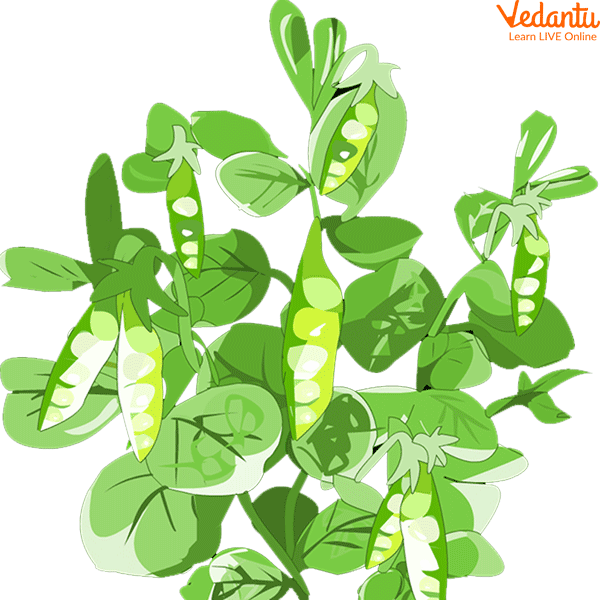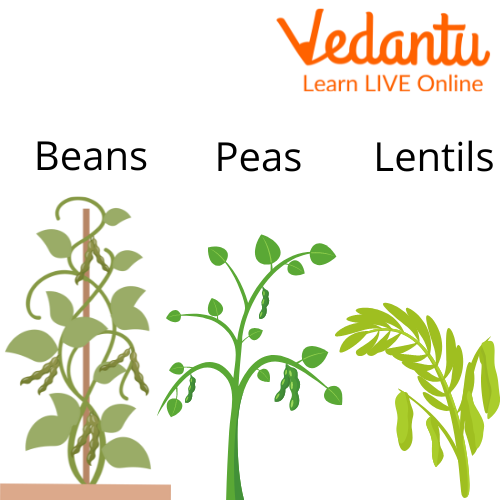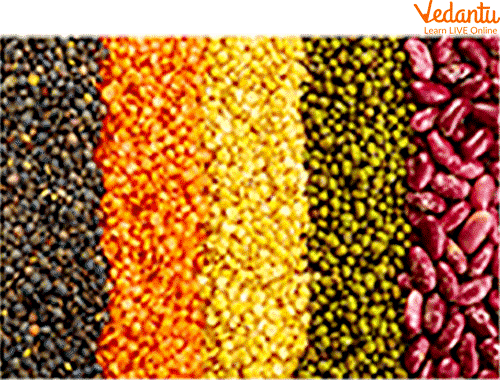




Why Are Leguminous Plants Essential in Our Environment?
A leguminous plant is a type of flowering plant that produces vegetables or meals from pods or ground knobs that improve the ability of nitrogen-rich material. They have nodules in their roots, where nitrogen-fixing bacteria live. Examples of Leguminous plants are beans, peas, lentils, and soybeans. Legumes are products of leguminous plants. The pods or fruits of these plants are called Legumes.
There are more than 18,000 species of Legumes. A few notable Legumes are beans, peas, peanuts, and soybeans. You might have some doubts about what are leguminous plants, how legumes grow, and where legumes plants grow. Let’s dive into the content to have a better understanding.

Peas
Formation of Legumes
Leguminous plants have a large number of species. The term leguminous refers to plants in the legume family, which includes plants that produce beans, peas, and lentils. To identify vegetative legumes, one must consider the number of leaflets that make up the leaf, leaf margins, stipules, and petioles. Most legumes have three leaflets; an exception is birdsfoot trefoil which has five. These plants contain pods which differ in size, colour, and shape.
Flowers of Leguminous Plants
They have spherical flowers and their petals are fused.
Fruits of Leguminous Plants
The fruits are in the form of pods. These are also called two valved fruits and they split to reveal their seeds. The seeds are edible.
Nitrogen Fixation in Leguminous Plants
The plant roots undergo nitrogen fixation with soil bacteria. Bacteria like rhizobium help in nitrogen fixation in leguminous plants.

Leguminous Plant
What are Legumes?
Legumes Pods arrive in different shapes, sizes, and surfaces. A pod delivers its seeds by dividing open along two creases.
Legumes are a significant wellspring of food since they are high in protein. Beans, peas, and peanuts are Legumes that individuals regularly eat. Soybeans are utilised to make such food sources as tofu, soy milk, frozen yoghurt, and soy sauce. Soybeans are additionally used to take care of domesticated animals. Hay and clover are utilised as domesticated animals' feed as well.
How do Legumes Grow?
Leguminous plants usually require more K, S, Mo, and B than grasses. Since the nutrient needs of grasses and legumes differ, use fertilisers to manage a grass/legume mixture. Adding K, S, Mo, and B will favour legume growth.
Where do Legumes Plant Grow?
Plants in the Fabaceae family produce legumes, which are also called pods. Dehiscent legumes split open along two seams to release their seeds, although in some cases, such as peanuts (Arachis hypogaea) and carobs (Ceratonia siliqua), seeds do not open naturally. There are many different kinds of fruits, but most of them are long, narrow, and have single rows of seeds. Besides providing food for both humans and animals, legumes also produce edible oils, fibre, and raw materials for making plastics. The seeds of many plants are grown for their edible seeds, which contain a lot of essential amino acids and are high in protein.
Uses of Legumes
Grain legumes are developed for their seeds, which are utilised for human and animal utilisation or the creation of oils for industrial purposes.
Legumes are utilised as an ingredient in vegan meat and dairy substitutes. Legumes growing as a plant-based protein source in the planet's marketplace. Legumes are a good source of protein, dietary fibre, carbs, and dietary minerals; for instance, a 100-gram serving of cooked chickpeas contains 18% of the Daily Value (DV) for protein, 30% DV for dietary fibre, 43% DV for folate, and 52% DV for manganese.
Legumes are likewise an amazing wellspring of safe starch which is separated by microorganisms in the intestine to deliver short-chain unsaturated fats (for example, butyrate) involved by gastrointestinal cells for food energy.

Legumes
Role of Leguminous Plants in Soil Fertility
Leguminous plants play a very important role in increasing soil fertility. They help in legumes growing and indigenous nitrogen production and they also fulfil human demands for protein and energy. They also can solubilize phosphate by excreting organic acids from the soil, in addition to improving soil fertility. When they are used in crop rotation, they help in the restoration of soil natural matter and limit pests and diseases. It is widely believed that the nitrogen fixation procedure is the most environment-friendly way to grant vast amounts of nitrogen needed through these plants. The bacteria multiply in the roots causing the swelling of the root cells to structure nodules.
Economic Importance of Legumes
Legumes are rich in a wide variety of proteins and minerals which are sold for cash income while tree legumes are necessary for livestock feed. Because of their ability to fix nitrogen levels in soil, they are often intercropped with cereals. Cowpea, groundnut, soybean, and common beans are some of the most important grain legumes which also play a very important role in the economy.
Summary
Beans and vegetables are the fruits or seeds of a group of plants called Fabaceae. Normally eaten all over the world, they are rich in fibre and significant nutrients and minerals. They're additionally an extraordinary source of vegetarian protein. It can be integrated into soups, tacos, mixed greens, and different recipes. Beans and vegetables have various medical advantages. Through this article, you can better understand what are leguminous plants, where legumes plant grow and how are legumes plant grown. These plants are very useful, the reasons are already discussed in the article.
FAQs on Leguminous Plants: Definition, Examples, and Importance
1. What are leguminous plants and can you give some common examples?
Leguminous plants, belonging to the family Fabaceae, are special types of plants known for producing seeds within a pod. Their most significant feature is the ability to form a symbiotic relationship with nitrogen-fixing bacteria in their roots, which enriches the soil. Common examples include:
Pulses: Peas, lentils, chickpeas, and beans (like kidney beans, black beans).
Forage Crops: Alfalfa and clover.
Other Examples: Peanuts, soybeans, and tamarind.
2. Why are leguminous plants so important in agriculture?
Leguminous plants are crucial in agriculture primarily because of their ability to perform natural nitrogen fixation. They host bacteria called Rhizobium in their root nodules, which convert atmospheric nitrogen into a form that plants can absorb. This process naturally fertilises the soil, reducing the need for synthetic nitrogen fertilisers and making them a key component of sustainable farming practices like crop rotation.
3. How do leguminous plants actually fix nitrogen in the soil?
Leguminous plants don't fix nitrogen by themselves; they do it through a symbiotic relationship with soil bacteria, mainly Rhizobium. Here’s how it works:
The plant's roots form small swellings called root nodules, which provide a home for the bacteria.
Inside these nodules, the plant provides the bacteria with nutrients and energy.
In return, the bacteria take inert nitrogen gas (N₂) from the air in the soil and convert it into usable compounds like ammonia (NH₃), which the plant absorbs to grow. This process enriches the soil with nitrogen for future crops.
4. What is the main difference between leguminous and non-leguminous plants?
The primary difference lies in their ability to fix nitrogen. Leguminous plants have root nodules that house nitrogen-fixing bacteria, allowing them to enrich the soil with nitrogen. Non-leguminous plants, such as cereals (wheat, rice) and most vegetables, lack these root nodules and cannot perform this function; they rely on absorbing available nitrogen directly from the soil.
5. Are all pulses and beans considered leguminous plants?
Yes, all pulses (the dried, edible seeds of legume plants) and beans are harvested from leguminous plants. Pulses are a sub-group within the larger legume family. For example, lentils, chickpeas, and kidney beans are all types of pulses that grow in pods on leguminous plants.
6. If leguminous plants are so good for the soil, why do farmers still grow other types of crops?
While leguminous plants are excellent for soil health, farmers practice crop rotation and grow a variety of crops for several key reasons:
Nutrient Balance: Different crops have different nutritional requirements. Rotating crops prevents the depletion of other essential minerals from the soil.
Pest and Disease Control: Planting the same crop repeatedly can lead to a build-up of specific pests and diseases. Rotation breaks this cycle.
Economic Diversity: Farmers grow crops like wheat, maize, and rice because they are staple foods with high market demand and economic value.
7. What are the main health benefits of eating legumes?
Legumes are a nutritional powerhouse and offer significant health benefits. They are an excellent source of plant-based protein and dietary fibre, which aids digestion and helps you feel full. They are also rich in essential minerals like iron and potassium. Regular consumption of legumes has been linked to a reduced risk of heart disease, lower cholesterol levels, and better blood sugar control.









